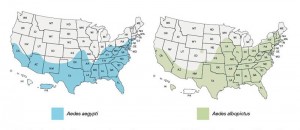Zika Virus: What is it?
By Dr. Amina Ahmed, Levine Children’s Hospital
 By now, most people have heard about Zika virus disease, which last February was declared a “public health emergency of international concern.” Transmitted by mosquitoes, Zika virus was first identified as a cause of human disease in 1954, which later spread through Africa, Southeast Asia and the Pacific Islands. Only recently has it been identified as a cause of major outbreaks.
By now, most people have heard about Zika virus disease, which last February was declared a “public health emergency of international concern.” Transmitted by mosquitoes, Zika virus was first identified as a cause of human disease in 1954, which later spread through Africa, Southeast Asia and the Pacific Islands. Only recently has it been identified as a cause of major outbreaks.
The current outbreak began in Brazil in early 2015; by the end of the year, it had spread to 33 countries in the Americas and the Caribbean. Among U.S. territories, Zika virus disease has been reported in Puerto Rico, the U.S. Virgin Islands and American Samoa. No locally acquired cases have been reported in the continental United States; all of the approximately 700 cases reported in the U.S. as of June 8, 2016, occurred in those who traveled to areas with active transmission. It is difficult to know how and where Zika virus will spread over time, so it is important for parents to know how to protect themselves and their children from the disease.
The virus is spread mainly by the bite of Aedes mosquitos, which are found throughout the Americas, including parts of the United States. Mosquitoes become infected when they feed on a person already infected by the virus, and then spread the virus to other people through bites. The virus can also be passed from a pregnant woman infected with the virus to her fetus during pregnancy or around the time of birth. We now know that the virus can be spread by sexual transmission from a man to his partners, and that the transmission can occur before, during or after the man has developed symptoms of the disease. It is also possible for the virus to be spread through blood transfusion, although no such cases have been reported to date. No matter how a person is infected, they can spread the virus by mosquito transmission for a week after being infected; in semen, the virus may persist for at least two weeks.
Fortunately, only one in five people infected with Zika virus actually develops symptoms; the remainder may not even know they have the infection. Characteristic symptoms in adults and children include fever, rash, muscle and joint pain, headache and conjunctivitis (red eyes). The illness is usually mild and lasts two to seven days. People are typically not ill enough to require hospitalization, and death is rare.
Please note that because there is no antiviral treatment or vaccine for the Zika virus, protection against mosquito bites is a key measure to prevent infection for those traveling to or residing in areas of active transmission. Aedes mosquitoes bite mostly during the daylight hours, so protection is essential all day. Such protection includes wearing clothes (preferably light-colored) that cover as much of the body as possible, using physical barriers such as window screens, keeping doors and windows closed, using air conditioning when available, sleeping under mosquito nets, and using insect repellants containing DEET, IR3535 or icaridin/picaridin.
For women who are pregnant or may become pregnant, precautions are different. Read more in Part 2: Zika, Pregnancy and Birth Defects.
Dr. Amina Ahmed is a pediatric infectious disease specialist at Levine Children’s Hospital. Her areas of expertise include congenital infections and tuberculosis. Dr. Ahmed is involved in clinical care, teaching and research.
This blog was produced in partnership with Charlotte Parent. Click here for the original post and other parenting resources.













